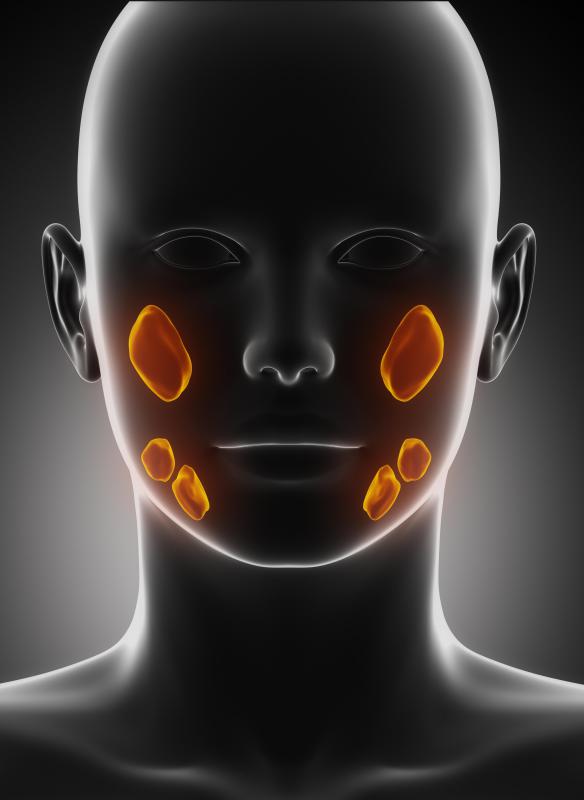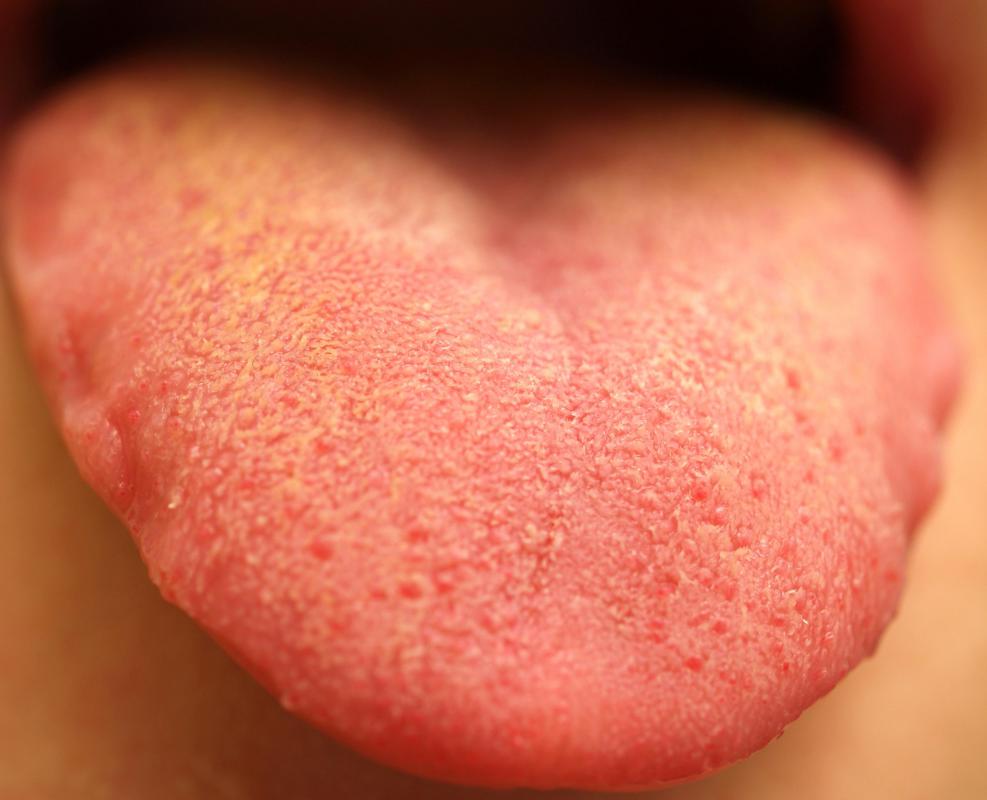At WiseGEEK, we're committed to delivering accurate, trustworthy information. Our expert-authored content is rigorously fact-checked and sourced from credible authorities. Discover how we uphold the highest standards in providing you with reliable knowledge.
What is Sialolithiasis?
Sialolithiasis is a term used to describe the formation of calculus stones in the salivary glands. These stones are called sialoliths. They are most often found in the submandibular gland, which is on the floor of the mouth. Of all the conditions and diseases that can affect the salivary glands, it is the most common.
Salivary stones are non-cancerous, but they can be uncomfortable and painful. The causes sialolithiasis is not exactly known, although some medical professionals believe that chronic dehydration can promote the growth of stones in the salivary glands. It is also believed that a bacterial invasion can lead to the build-up of stones in the salivary glands. Many times there are no conditions or symptoms preceding their appearance.

Diagnosis of sialolithiasis is usually done via a simply examination. When they are visible, the small white stones are usually easy for a doctor to locate. When the stones are not visible, a doctor may conduct a series of tests to confirm a diagnosis of salivary stones. X-rays, ultrasounds and CAT scans can all be used to detect stones that may be too deep to detect visually. A special dye may be injected into the salivary duct as well, which can help to locate stones and other abnormalities in the gland.

The most common symptom of sialolithiasis is swelling and pain of the gland. The discomfort usually increases when the person eats, as this is when the glands try to produce saliva to aide in the chewing and digestion process. The affected glands may also appear red and tender to the touch. In most cases these stones are more of a discomfort than anything else, but if left untreated the condition can sometimes contribute to chronic bacterial infections of the mouth. Oral bacterial infections can be very serious.

Treatment for sialolithiasis usually involves removing the stones from the mouth. Removal methods can vary depending on the size and location of the stone. Minor surgery is one of the most common methods. Sometimes this procedure involves cutting the stone directly so it will break up, or operating on the gland that has the stone. This causes it to open it it up and allow the stone to pass. If the stone was exceptionally large or caused severe damage to the affected duct, then completely removal of the duct may be the only surgical option. In some cases bombarding the stone with sound waves allows for it to pass without the need for any surgery.
AS FEATURED ON:
AS FEATURED ON:













Discuss this Article
Post your comments